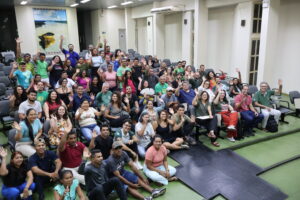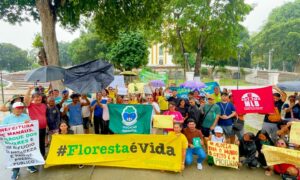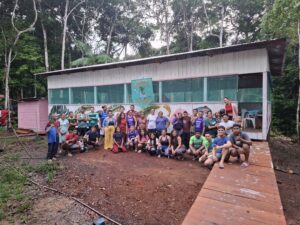Exposure to mercury by inhalation, ingestion or contact can harm our central and peripheral nervous system, digestive tract, immune system, lungs and kidneys
By Camila Duarte Ritter
The Amazon Rainforest shelters a rich biodiversity and traditional cultures that have thrived for thousands of years. Unfortunately, this way of life is being threatened by the increasing presence of mining in the region. The quest for gold and other precious minerals has had a devastating impact on the health of indigenous and riverside communities, as well as on the ecosystem as a whole.
Communities living near gold mining operations are exposed to harmful concentrations of mercury released during gold extraction and discharged into watercourses, soil, and the atmosphere. When released into the environment, mercury transforms into its most toxic form, methylmercury (MeHg), through specific bacteria. This process allows MeHg to enter aquatic food chains, where it can accumulate in individual organisms (bioaccumulation) or concentrate as it moves up the food chain (biomagnification in predatory fish, for example).
Exposure to mercury through inhalation, ingestion, or contact can harm our central and peripheral nervous systems, digestive tract, immune system, lungs, and kidneys. Effects on the central nervous system include depression, extreme irritability, hallucinations, memory loss, tremors in hands, head, lips, and tongue, as well as blindness, retinopathy, and optic neuropathy, hearing loss, and reduced sense of smell.
Even in low doses, mercury can be toxic, and the effects of MeHg are particularly concerning for public health as it can cross the placenta and the blood-brain barrier, affecting fetal development and causing irreversible damage, including decreased intellectual and motor capabilities.
Several studies investigating the relationship between mercury levels in hair and neuropsychological performance have found strong links between mercury and cognitive impairments in children and adolescents throughout the Amazon region. This has raised concerns about the impacts on child health in the Madeira and Tapajós rivers in Brazil and the Madre de Dios region in Peru. The World Health Organization recommends monitoring MeHg concentration in the hair of pregnant women and argues that levels above 10 μg/g are associated with increased systolic blood pressure and may increase the risk of neurological effects in fetuses.
Recently, Minamata disease has been confirmed in Amazonian communities as a result of exposure to high levels of MeHg, with symptoms such as tremors, insomnia, anxiety, alterations in tactile and vibratory sensations, and visual deficits. Such effects have led the Munduruku people to produce a video denouncing the impact of mining on their lands.
The Juruá River is one of the few Amazonian rivers that has not yet been affected by mining activity, and local associations and institutional partners are united to keep it that way! Taking a firm stance against illegal mining is essential to protect the health of communities and the environment. Strengthening local economic production chains, such as rubber, pirarucu, and vegetable oils, is crucial to ensure the income and autonomy of communities without contaminating the waters, fish, and forest.
For a living and mining-free Juruá!






